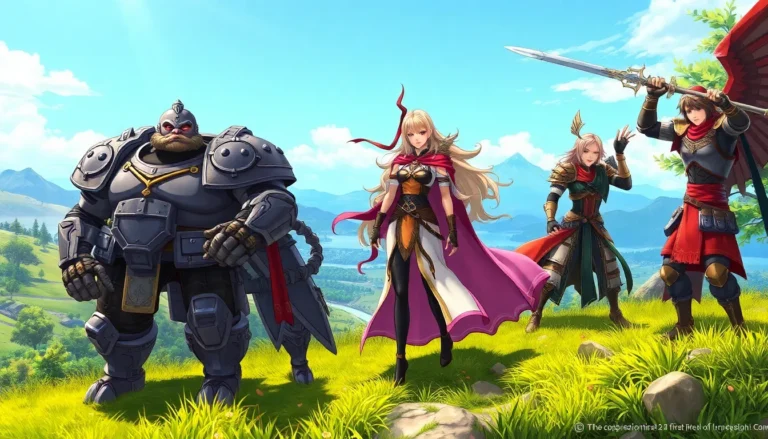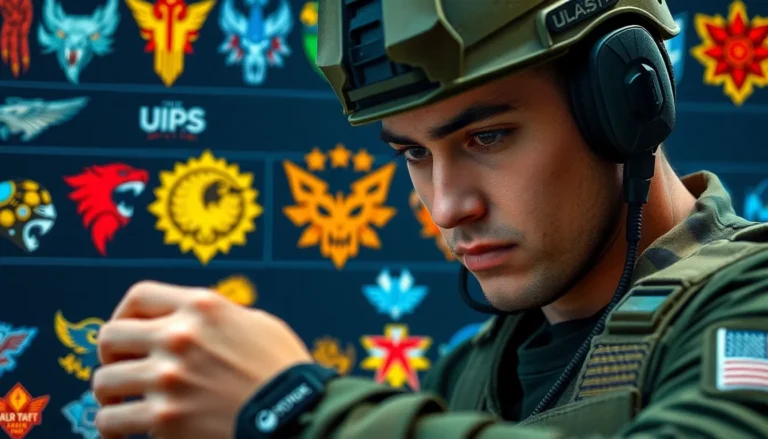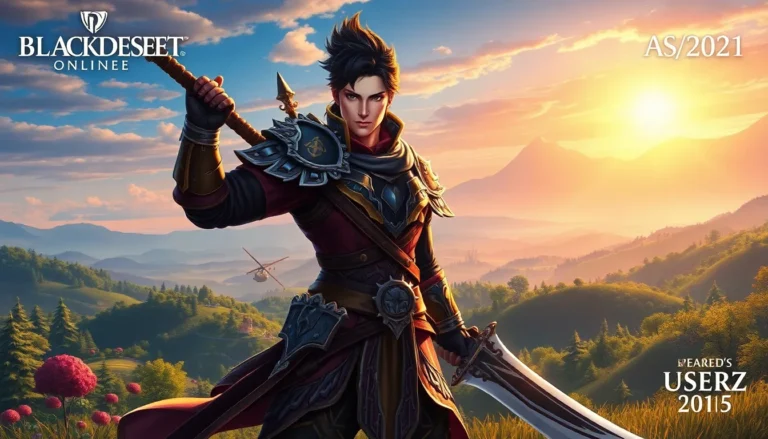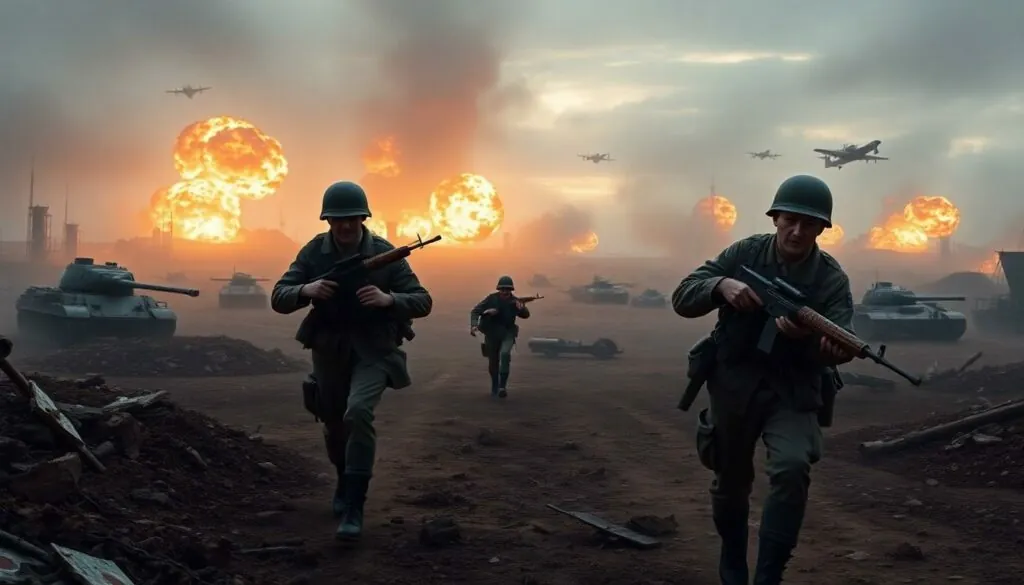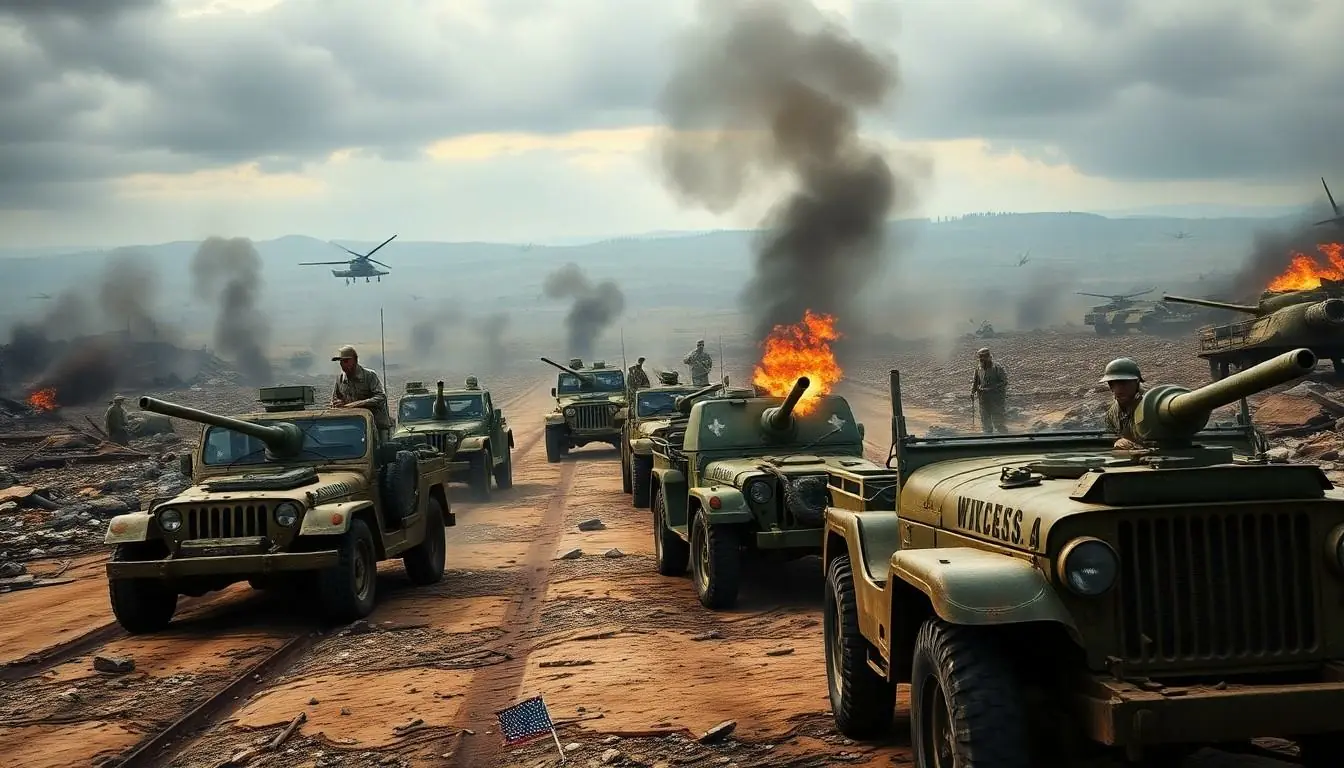Table of Contents
ToggleIn the vast landscape of video gaming, few franchises have made as explosive an entrance as Battlefield. Picture this: it’s 2002, and gamers are craving a fresh experience that combines strategy, teamwork, and jaw-dropping graphics. Enter Battlefield 1942, the game that launched a thousand multiplayer battles and turned casual players into battle-hardened veterans.
Overview of the Battlefield Franchise
The Battlefield franchise emerged as a groundbreaking series in the first-person shooter genre. Launched in 2002, Battlefield 1942 set the stage for large-scale warfare and innovative gameplay mechanics. Players engaged in massive battles across diverse environments, showcasing teamwork and strategy.
Subsequent titles built on the success of Battlefield 1942, incorporating new features and technologies. Battlefield Vietnam entered the scene in 2004, introducing thematic elements and a focus on the Vietnam War. This installment further expanded the gameplay with vehicles and a varied arsenal.
In 2005, Battlefield 2 advanced the series with modern combat scenarios and improved graphics. This iteration attracted a dedicated player base, emphasizing squad play and tactical cooperation. By 2010, Battlefield: Bad Company 2 continued evolving the franchise, blending humor with intense combat scenarios.
Recognizing the importance of community engagement, DICE released Battlefield 3 in 2011. This game introduced a robust multiplayer experience, setting a benchmark for graphics and sound design in the industry. Gamers appreciated the progression system and the ability to customize loadouts.
Moreover, Battlefield 1 launched in 2016, taking players back to World War I. The shift away from modern warfare provided a fresh perspective and historical context. This game emphasized unique gameplay elements, such as the use of horses and different classes.
As the franchise grows, it continues to innovate and adapt to changing player expectations. Various titles have embraced different time periods, making the series dynamic and diverse. Through its history, Battlefield has consistently prioritized immersive gameplay and community involvement, solidifying its place in video gaming culture.
The Release of the First Battlefield Game
The first entry in the Battlefield franchise, Battlefield 1942, launched in 2002. This marked a significant moment in gaming history, establishing a new standard for multiplayer first-person shooters.
Development Background
DICE developed Battlefield 1942, aiming to deliver a revolutionary experience in online warfare. Focused on large environments and vehicle-based combat, the game encouraged teamwork and strategic gameplay. The use of the Refractor Engine provided transformative graphics, enhancing the overall realism. A passion for historical accuracy fueled the developers’ desire to recreate World War II battle scenarios. As a result, the game offered players a blend of action and strategy rarely seen in its time.
Initial Announcement and Hype
The initial announcement of Battlefield 1942 generated substantial excitement within the gaming community. Gamers anticipated its release, captivated by the concept of large-scale battles involving vehicles and infantry. Marketing campaigns showcased the game’s innovative features, including expansive maps and dynamic gameplay mechanics. Pre-release presentations highlighted the game’s unique multiplayer focus, appealing to both casual and competitive players. Each showcase built momentum, contributing to heightened expectations as the release date approached.
Gameplay Features of the First Battlefield
Battlefield 1942 featured groundbreaking gameplay that redefined the first-person shooter experience.
Multiplayer Experience
Multiplayer experience stood at the forefront, allowing up to 64 players to engage in epic battles across expansive maps. Maps included iconic World War II locations like Wake Island and the Pacific Theater. Gamers participated in various game modes, including Conquest and Capture the Flag, promoting teamwork and strategic coordination. Players could choose from five classes, each providing unique abilities and weapons tailored to different playstyles. The introduction of vehicles, such as tanks and planes, added layers of complexity, enhancing the overall combat dynamics. Seamless transitions between ground and air combat emphasized the franchise’s commitment to immersive gameplay.
Single-Player Campaign
Single-player campaign offered a limited yet engaging narrative experience. Players embarked on missions that highlighted key battles from World War II, immersing them in historical contexts. The AI-controlled teammates and enemies created a challenging environment, requiring strategic planning and adaptability. Each mission features objectives that users must accomplish to advance through the campaign. Despite its focus on multiplayer, the single-player mode still provided enjoyable gameplay, allowing players to familiarize themselves with maps and mechanics. Though minimal compared to modern standards, this mode established a foundational experience for new players in the franchise.
Reception and Impact
Battlefield 1942 received widespread acclaim upon its release, influencing the first-person shooter landscape significantly. Critics praised its expansive multiplayer experience and innovative gameplay mechanics.
Critical Reception
Review scores highlighted the game’s technical achievements and engaging multiplayer modes. Publications like GameSpot and IGN awarded high ratings, noting the immersive graphics powered by the Refractor Engine. Players celebrated the teamwork-driven gameplay and the diverse range of maps and vehicles. This positive reception established Battlefield as a notable contender in the gaming arena, setting standards for future titles.
Influence on Future Titles
Subsequent entries in the Battlefield franchise drew inspiration from the core concepts of Battlefield 1942. Franchise evolution emphasized large-scale warfare, strategic gameplay, and community engagement. Battlefield Vietnam introduced unique thematic elements while Battlefield 2 advanced the series with modern combat scenarios. Each release maintained the benchmark set by its predecessor, showcasing DICE’s commitment to innovation, enriching the overall gaming experience. The impact of Battlefield 1942 remains evident in the series, shaping multiplayer mechanics and community dynamics for years to come.
Conclusion
The launch of Battlefield 1942 in 2002 marked a transformative moment in the gaming landscape. Its innovative approach to multiplayer gameplay and large-scale combat redefined the first-person shooter genre. The excitement generated by its release laid the groundwork for a franchise that continues to evolve and captivate players around the world.
As each new installment builds on the legacy of its predecessor, the essence of teamwork and strategic gameplay remains at the core of the Battlefield experience. This enduring commitment to innovation ensures that the franchise will continue to influence the gaming industry for years to come.



